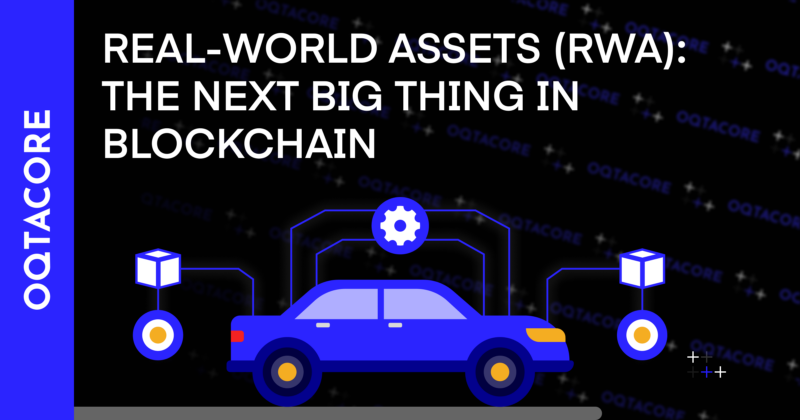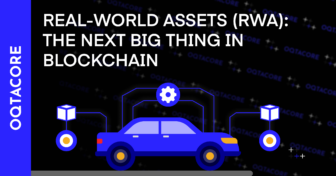
Explore how RWAs enable accessible investments in real estate, gold, and stocks without hefty costs or complex processes.
Introduction
Imagine being able to invest in real estate, gold, or stocks without needing millions of dollars or going through complex paperwork. What if you could own a piece of a famous painting or earn income from a rental property – all through blockchain technology?
This is now possible thanks to Real-World Assets (RWA) tokenization, a major trend transforming finance, investing, and ownership.
Big financial players like BlackRock, JPMorgan, and Goldman Sachs are already using blockchain to bring real-world assets into the digital economy. At the same time, DeFi platforms like MakerDAO, Centrifuge, and MapleFinance are integrating RWA to create new investment opportunities.
- But what exactly are real-world assets in blockchain?
- How does RWA tokenization work?
- And why is it becoming so important?
This beginner-friendly guide will explain everything you need to know.
What Are Real-World Assets (RWA) in Blockchain?
Real-world assets (RWA) are physical or financial assets that exist in traditional markets but are now being digitized and tokenized on blockchain networks.
Examples of Real-World Assets:
- Real Estate – Buying a fraction of a house or commercial building (RealT).
- Gold & Commodities – Owning tokenized gold, silver, or oil (Paxos Gold (PAXG), Tether Gold (XAUT)).
- Stocks & Bonds – Investing in shares of companies or government bonds (JPMorgan Onyx, Franklin Templeton’s OnChain U.S. Government Money Fund).
- Luxury Goods – Purchasing a digital share of artwork, classic cars, or fine wine (Sygnum’s Tokenized Art).
With blockchain, these assets become digital tokens that can be bought, sold, or traded globally in seconds – instead of waiting for weeks or months in traditional markets.
Why is RWA Tokenization a Big Deal?
Today, many traditional assets are hard to buy and sell quickly. For example:
- Real estate often requires large investments and complex legal processes.
- Private equity and bonds are mostly available to big investors and financial institutions.
- Art and collectibles are expensive and difficult to sell fast.
Tokenization solves these problems by making assets more accessible, liquid, and efficient.
1. More People Can Invest
Instead of needing millions of dollars to buy a property, tokenization allows investors to own small portions of assets. This means more people can participate in the financial markets.
2. Instant Trading & Liquidity
Traditionally, selling a property or a bond can take weeks or months. With blockchain, you can buy or sell tokenized assets instantly, just like trading cryptocurrencies on platforms like Ondo Finance or INX.
3. Transparency & Security
Since all transactions are recorded on the blockchain, ownership records are secure and tamper-proof. This reduces fraud and increases trust through services like Chainlink Proof of Reserve.
4. Lower Costs & Faster Transactions
Buying real estate or stocks through banks and brokers often involves many middlemen who charge high fees. Blockchain removes intermediaries, making transactions cheaper and faster.
5. Big Institutions Are Getting Involved
Major companies like JPMorgan, BlackRock, and HSBC are launching tokenized investment products, showing that RWA is becoming a serious part of global finance.
How Does RWA Tokenization Work?
The process of turning real-world assets into blockchain-based tokens involves five key steps:
- Choosing the Asset
– It could be real estate, gold, stocks, or bonds.
– Creating a Digital Token - A blockchain-based token represents ownership of the asset.
– Platforms like Ethereum, Polygon, and Avalanche are commonly used for tokenization. - Legal & Custody Setup
– The real-world asset is managed by a trusted institution or smart contract. - Selling & Trading the Token
– Investors can buy and trade the token on blockchain platforms like Ondo Finance. - Earning Income & Ownership Rights
– Token holders may receive dividends, rental income, or profit from price increases.
Platforms like Centrifuge and Goldfinch are making this process accessible for investors worldwide.
Challenges & Risks of RWA Tokenization
Despite its potential, real-world asset tokenization still faces challenges:
1. Regulations & Compliance
- Different countries have different rules for security tokens and digital assets.
- Some governments have not yet approved tokenized real estate or bonds.
2. Trust & Legal Ownership
- Who controls the physical asset backing the token?
- How are investor rights protected in case of disputes?
3. Market Adoption & Infrastructure
- Institutional investors need secure, enterprise-grade solutions (Fireblocks).
- Many retail investors are still unfamiliar with blockchain-based investing.
These challenges are being addressed by governments, financial institutions, and blockchain innovators, making the future of RWA promising.
Building the Future of RWA with OQTACORE
At OQTACORE, we develop next-generation blockchain solutions that bring real-world assets into the digital economy.
With over $820M in project value, we specialize in:
- Tokenized Asset Platforms – Secure and compliant RWA solutions.
- Full-Cycle Blockchain Development – From ideation to implementation.
- DeFi & Web3 Innovation – Bridging traditional finance and decentralized finance.
Whether you’re an institution, fintech startup, or DeFi project, OQTACORE is the partner that brings your tokenization vision to life.
Build. Scale. Lead the Digital Future.
